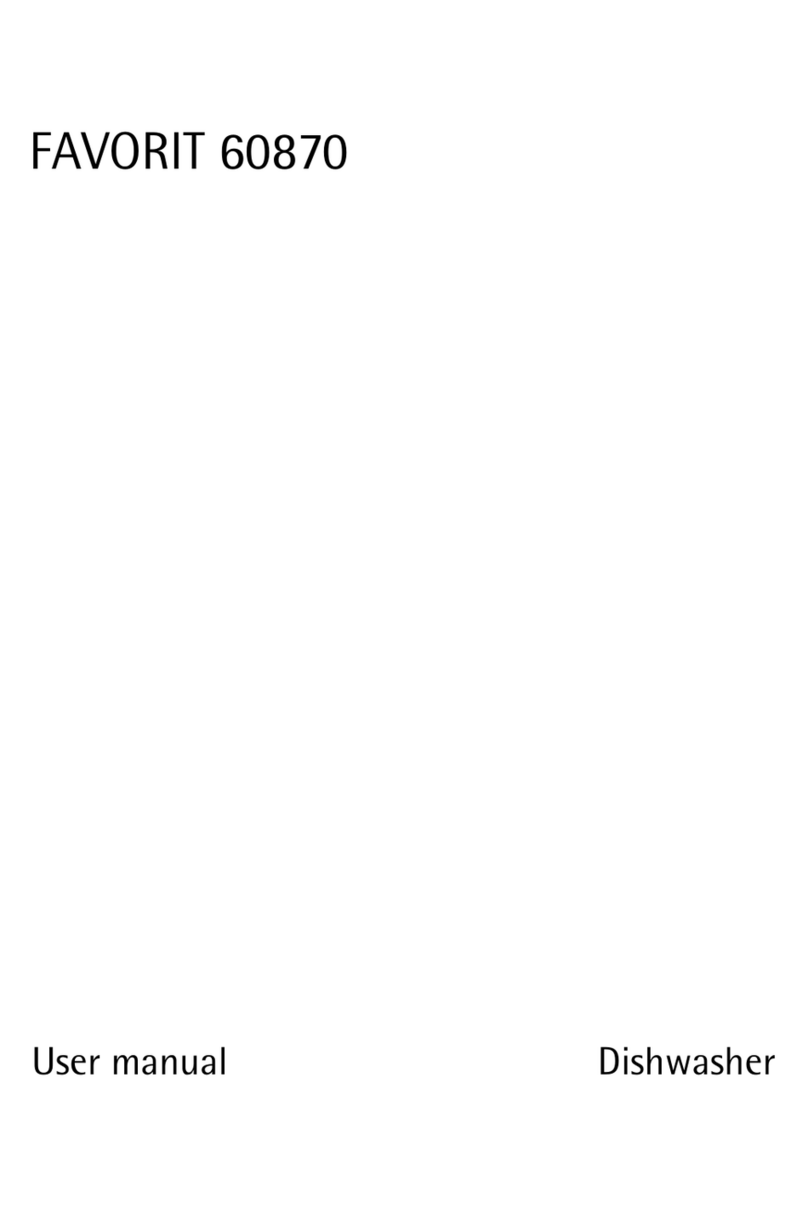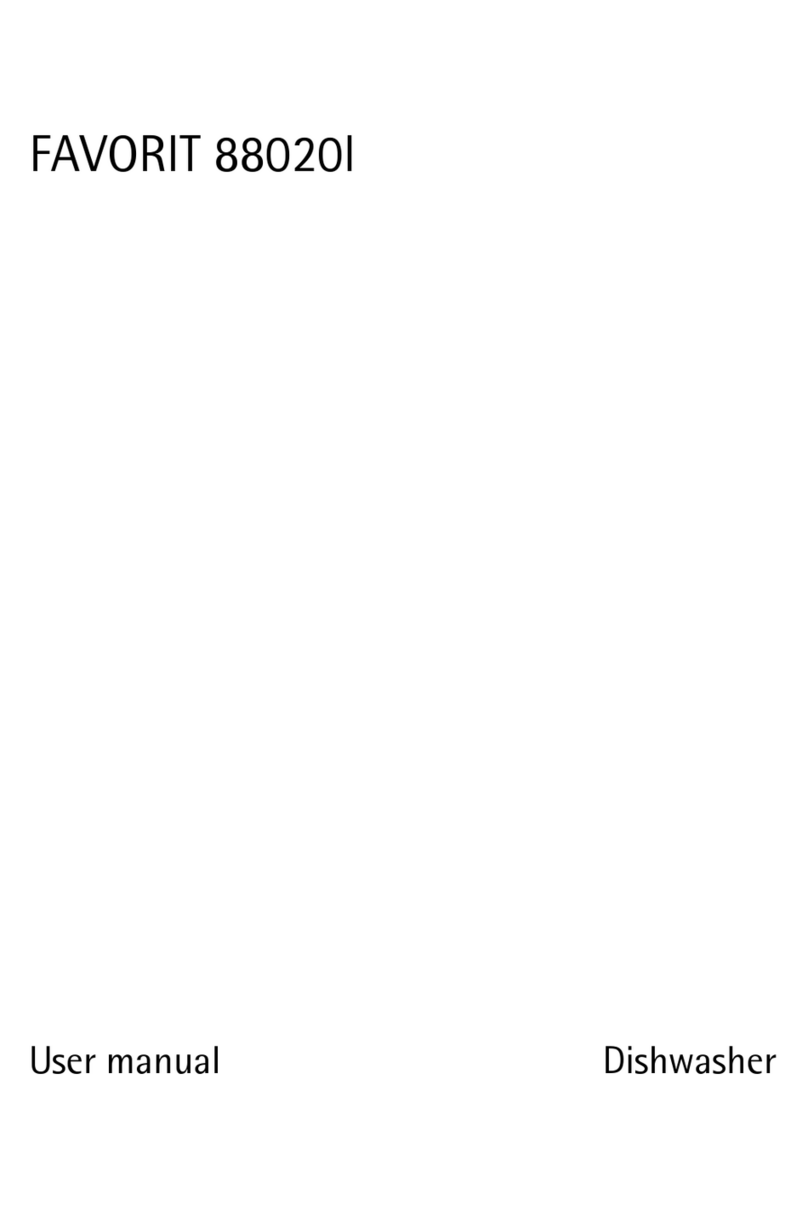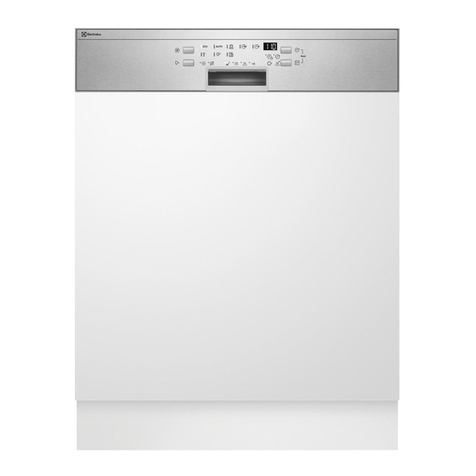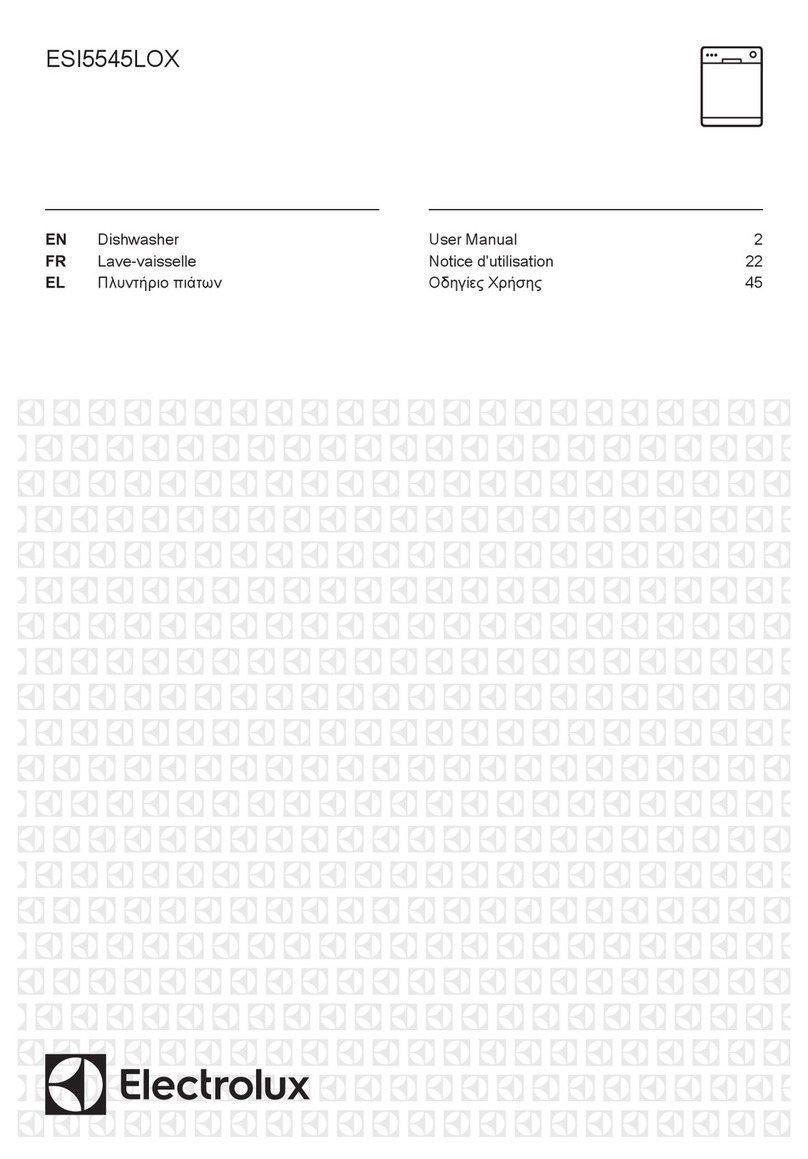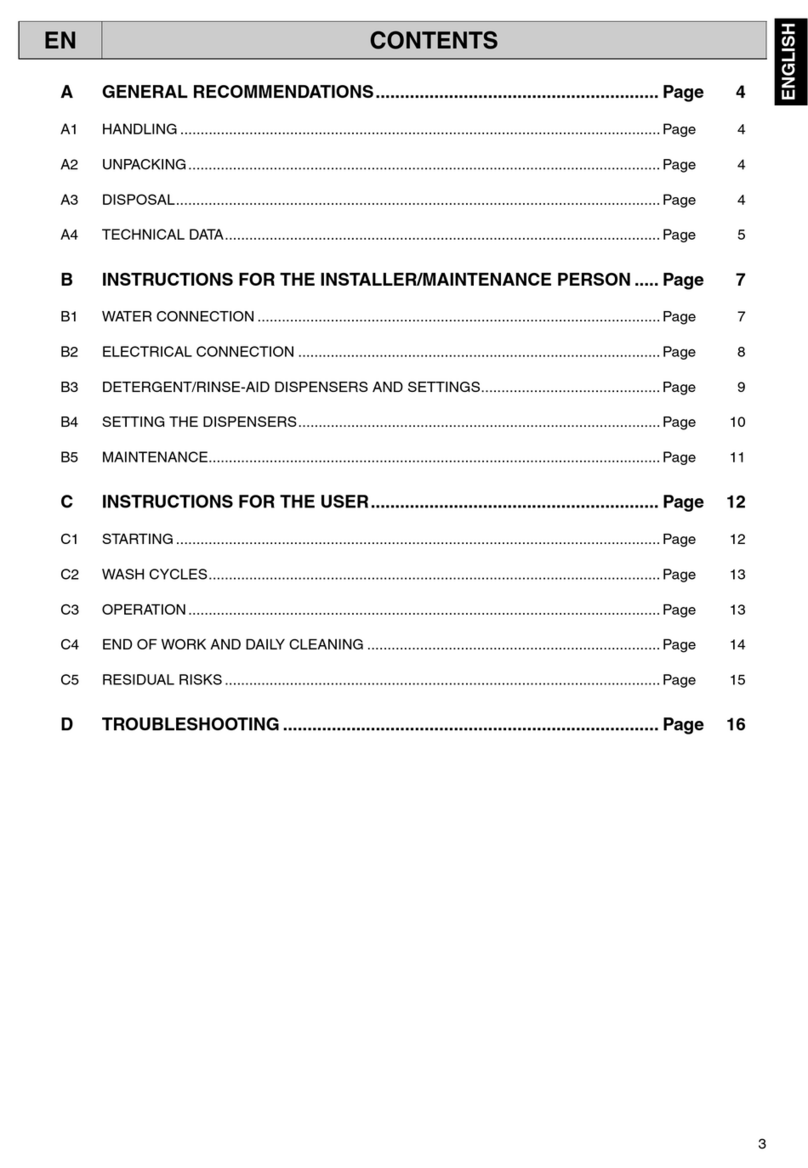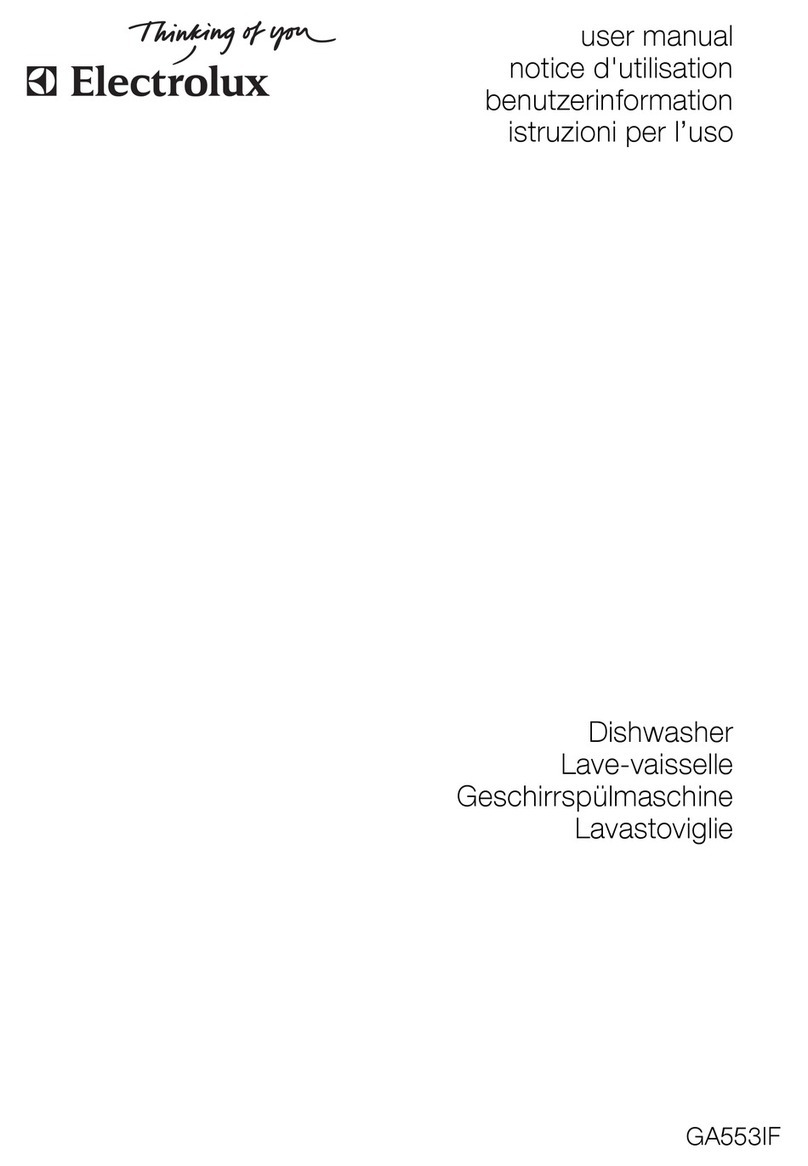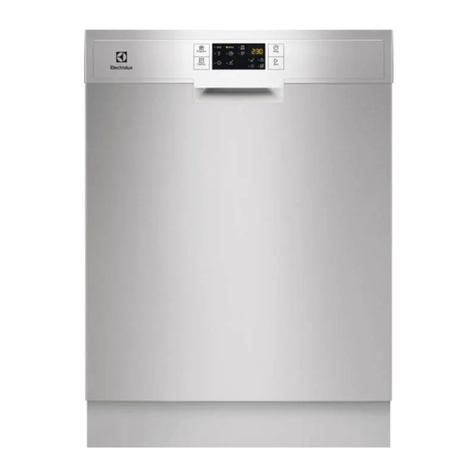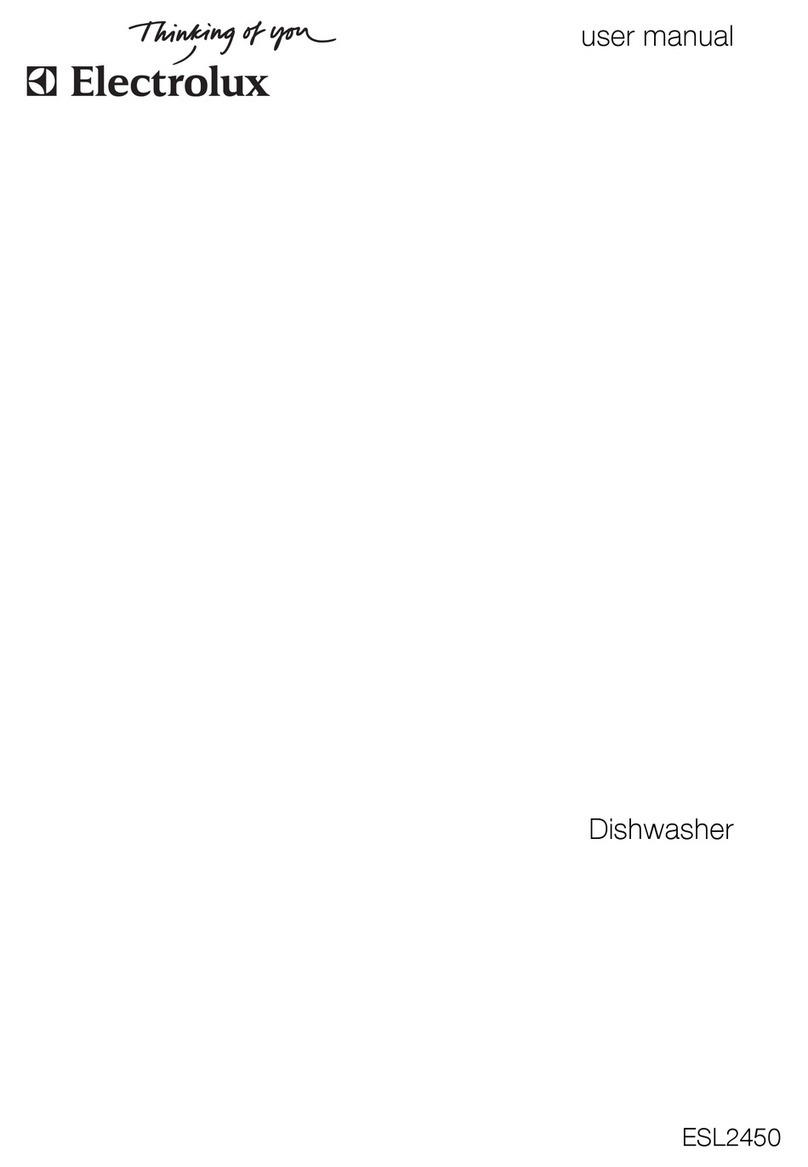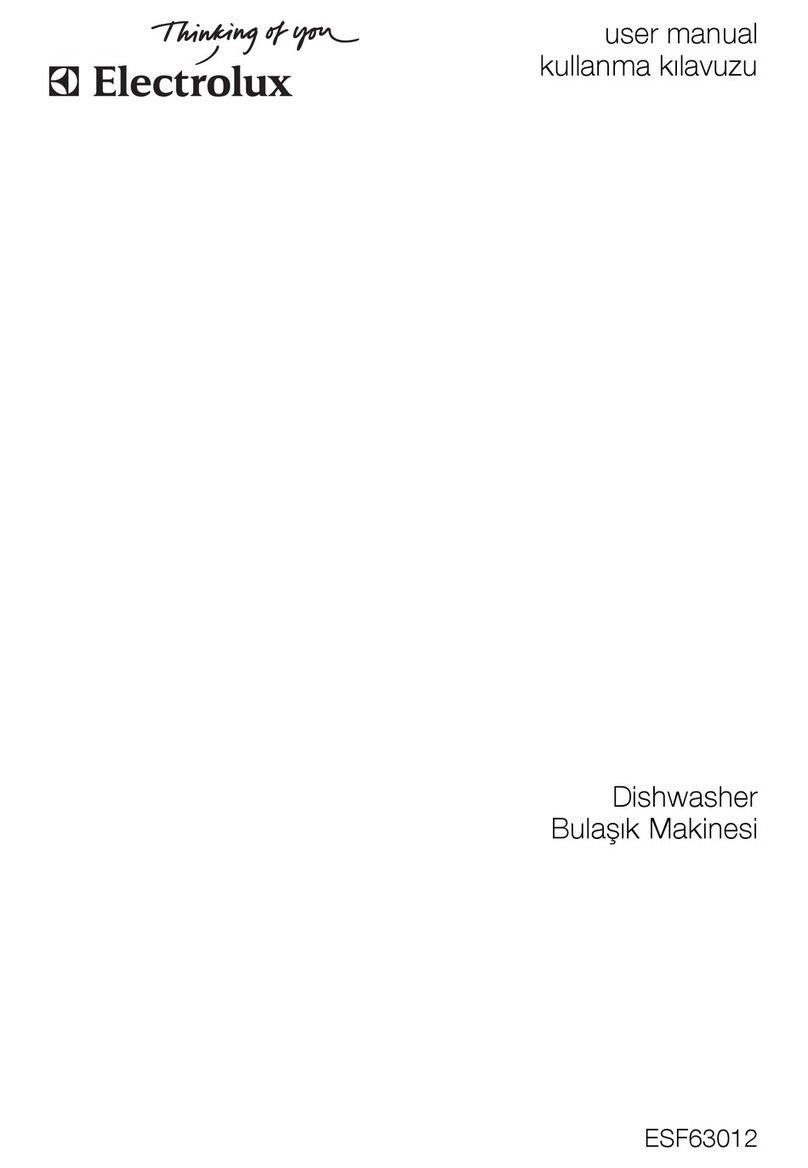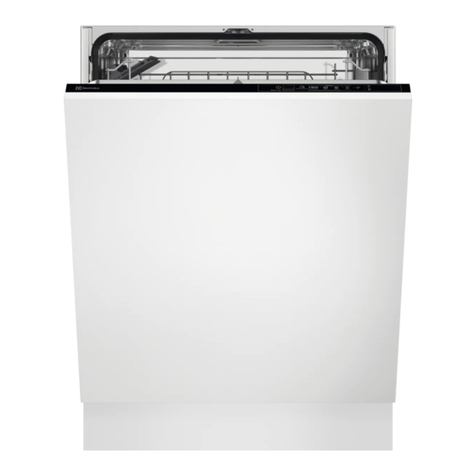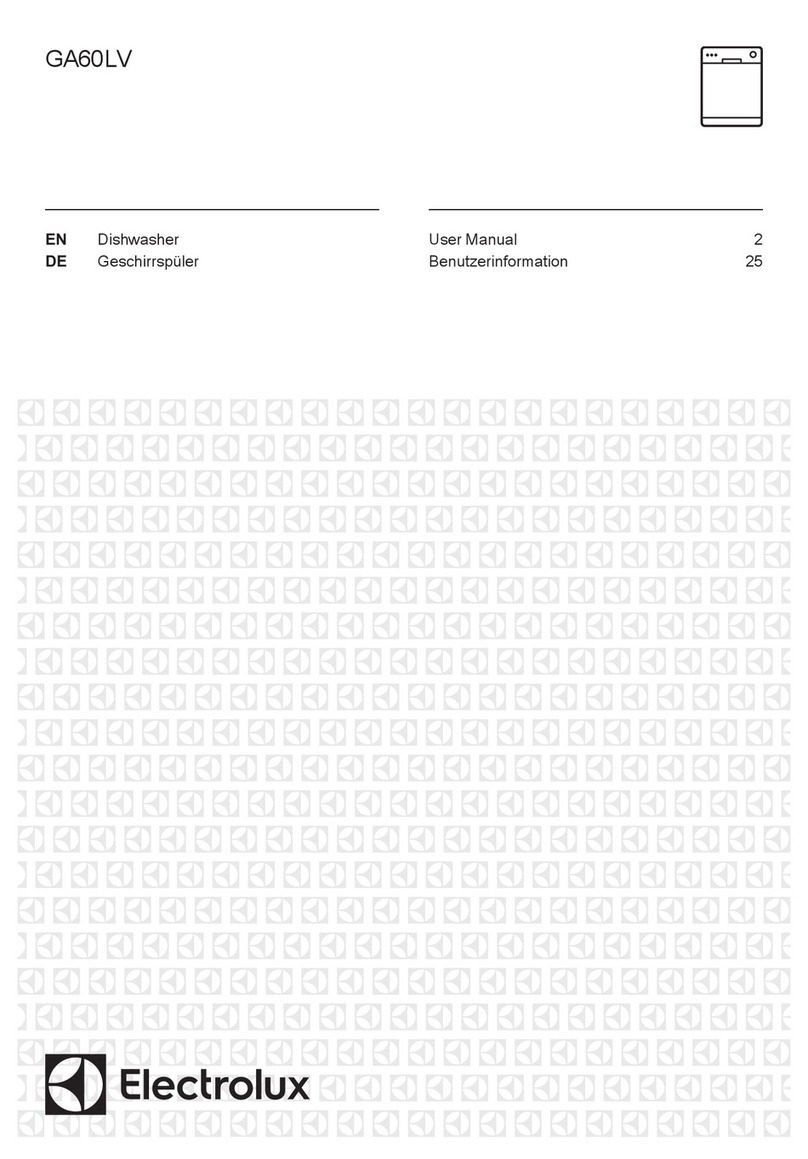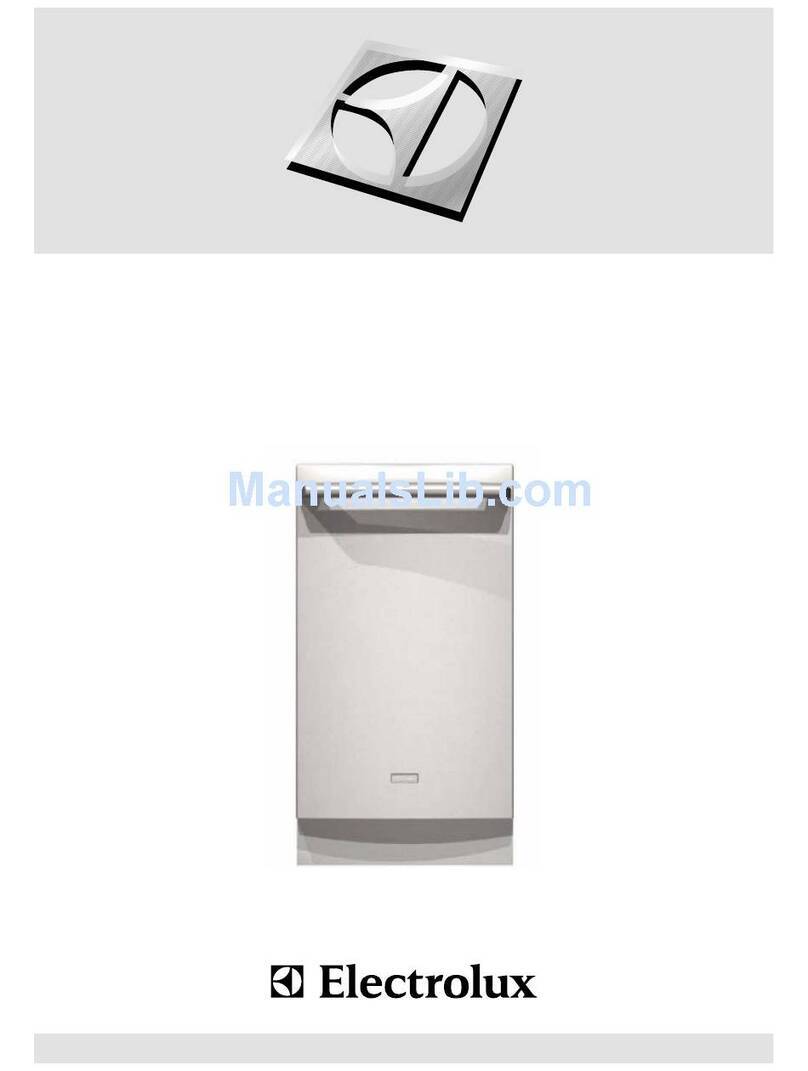INTRODUCTION
NEW TECHNOLOGY = DISHWASHER DESIGNED USING SOPHISTICATED COMPUTER
TECHNIQUES AND MODERN INDUSTRIAL TECHNOLOGY
RESULT:
The use of massive resources and extensive experience, combined with modern technical and contruction
methods, have made it possible to develop this new range of innovative appliances which meet the
demands of a market in continuous evolution.
MAIN CHARACTERISTICS
STRUCTURE:
- Modular and convertible, in three versions: Free-Standing, Fully-Built-in, Partially Buily-in (control panel
visible).
- One-piece load-bearing base in sound-absorbing material.
- Two removable side panels.
- Styling flexible according to the various configurations requested.
HYDRAULIC CIRCUIT:
- Newly-designed integrated hydraulic circuit.
- New integrated sump (in the base) designed for simultaneous or alternate washing.
- Softening of regeneration water up to 90°F - 50°D.
- Optimization of regeneration at 5 different levels (10 levels for electronic versions).
- Mechanical regulation of regeneration level (via software for electronic models).
ELECTRICAL FEATURES:
- Integrated pump motor with dual-purpose operation (wash and drain).
- External tube-enclosed heating element (connected between the sump and the delivery duct to the
upper spray arm).
- New timers / electronic boards (to optimize performance and consumption).
- Vented drying (Impulse, Active Dry, Turbo Dry).
CONTROL / SAFETY FEATURES
- Detection of washing temperature by thermostats (temperature sensors for electronic models).
- Detection of water level by pressure switch (software control for electronic models).
- Anti-leak systems: Anti-overflow - Anti-flooding - Acquastop.
- Anti-overheating systems: Safety thermostat (Time-out for electronic models).
- Door aperture safety device
- Total functional protection (+ software control for electronic models).
ENVIRONMENT AND OPERATION
- Built entirely using recyclable materials
- Super-silent operation thanks to the use of new materials and construction technologies.
- Simplification of installation and build-in procedures.
- Balanced door with self-adjusting hinges (no manual adjustment required).
- New system for adjustment of rear feet from the front of the appliance (for TOP range built-in models).
SERVICING
- Easy access to the components thanks to the removable side panels and intelligent positioning of the
components.
5
